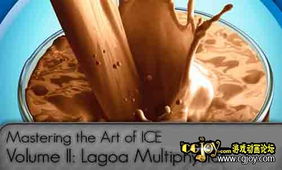Introduction:
Corn fishing, a popular and effective method for catching fish, relies heavily on the skillful deployment of corn kernels as bait. The key to success in corn fishing lies in understanding how to properly introduce the bait into the water. This article delves into the essential techniques for mastering the art of corn fishing, ensuring that your bait is perfectly submerged and ready to attract fish.
Understanding Corn as Bait:
Corn kernels are a favored food source for many species of fish, making them an excellent choice for bait. The sweet and nutritious nature of corn attracts fish from various depths and encourages them to bite. However, simply throwing corn into the water is not enough; it must be introduced with precision to maximize its effectiveness.
Choosing the Right Corn:
The first step in corn fishing is selecting the right type of corn. While many anglers prefer to use fresh corn on the cob, others opt for dried corn kernels. Fresh corn is typically preferred for its scent and taste, but dried corn is more convenient and can be stored for longer periods. Regardless of the type, ensure that the corn is clean and free from any mold or spoilage.
Preparing the Corn:
Before introducing the corn into the water, it is essential to prepare it properly. For fresh corn on the cob, remove the husks and silk, and cut the cob into bite-sized pieces. For dried corn kernels, rinse them thoroughly to remove any impurities. Some anglers also choose to soak the corn in water for a few hours to enhance its scent and make it more appealing to fish.
Choosing the Right Equipment:
The choice of equipment is crucial in corn fishing. A good quality fishing rod and reel should be equipped with a strong line that can withstand the pull of larger fish. A suitable hook, often a size 2 to 4, is ideal for attaching the corn. A bobber or a float can be used to control the depth at which the corn is presented to the fish.
The Art of Submersion:
Now comes the critical part: how to get the corn into the water. Here are some essential techniques to consider:
Throwing Technique: When throwing the corn, aim for a gentle and controlled release. A hard, forceful throw can scare away fish or dislodge the corn from the hook. Practice a smooth, arc-like motion to ensure the corn lands softly in the water.
Timing: The timing of when you release the corn is crucial. Wait until the bobber or float has reached the desired depth before casting. This ensures that the corn is submerged immediately upon entering the water.
Angle of Approach: The angle at which you approach the water is important. Aim to land the corn in a way that it sinks vertically or at a slight angle. This helps to prevent the corn from being swept away by currents or wind.
Adjusting Depth: Once the corn is in the water, observe the bobber or float. If it is moving too quickly or not at all, adjust the depth by raising or lowering the weight attached to the line.
Patience: Be patient and allow the corn to settle at the desired depth. Fish may take some time to approach a new bait, so wait for a few moments before reeling in.
Advanced Techniques:

For those looking to refine their corn fishing skills further, consider the following advanced techniques:
Using a Leader: A leader, a length of line between the main line and the hook, can be used to increase the distance between the bait and the hook. This can be particularly effective in windy conditions or when fishing in areas with a strong current.
Adjusting the Weight: The weight attached to the line can be adjusted to control the depth of the corn. A heavier weight will sink the corn faster, while a lighter weight will allow it to float closer to the surface.
Changing the Bait Presentation: Experiment with different methods of presenting the corn, such as threading it onto the hook or using it as a trailer behind a plastic worm. Each method can attract different species of fish.
Conclusion:
Corn fishing is a rewarding and accessible method for anglers of all skill levels. By mastering the art of corn fishing, specifically the techniques for perfectly submerged bait, you can enhance your chances of success on the water. Remember to choose the right corn, prepare it properly, and use the right equipment. With practice and patience, you'll be able to introduce your corn bait with precision, leading to more successful fishing trips. Happy fishing!












